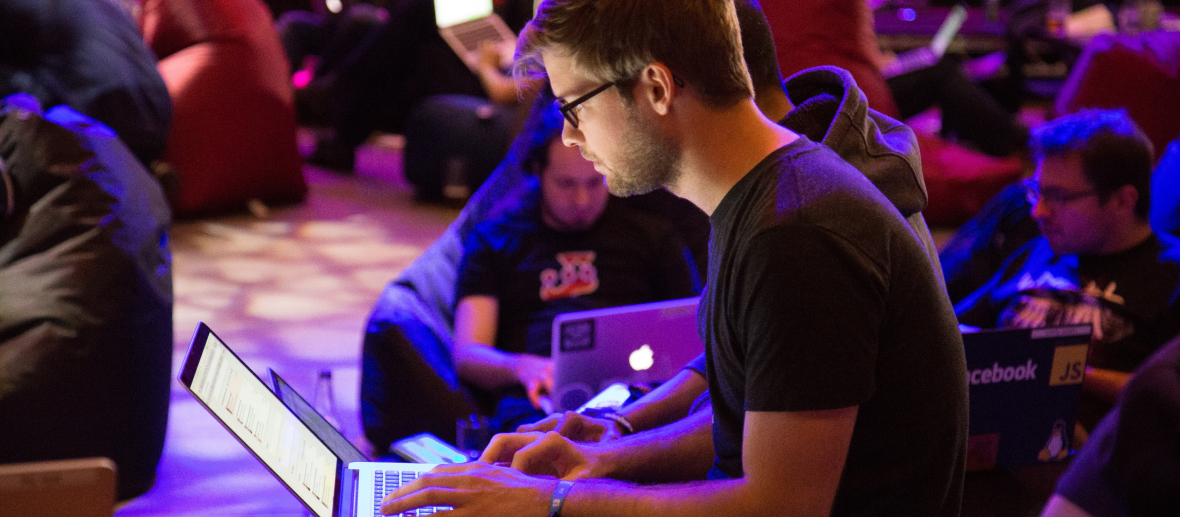

The global pandemic has left us in the world accustomed to remote offices. Cloud solutions, thorough documentation, and multiple channels for instant messaging were all helpful tools for remote work. They also were useful in cooperation with outstaffing partners. We thought that Covid transformations were significant. Just because we couldn’t predict what 2022-2023 would bring us.
Content:
- Background and challenges of IT outstaffing in 2023
- Technologies: Data protection and cloud solutions
- The effect of the Russian-Ukrainian war on the European IT industry
- Global economic downfall 2022-2023 and its effect on IT
- AI and its effect on information technology
- Partnership and ecosystems instead of customer/vendor relations
- To wrap it up
The IT industry in Europe is experiencing significant shifts and transformations in 2023, influenced by various factors ranging from geopolitical conflicts to technological advancements. This article explores the key trends shaping the IT outstaffing landscape in Europe, focusing on the effects of the Russian-Ukrainian war, the global economic downfall, the rise of AI, and the shift towards partnership and ecosystems. These trends have far-reaching implications for IT specialists, businesses, and the overall IT industry in Europe.
Background and challenges of IT outstaffing in 2023
IT outstaffing has gained prominence as a response to the increasing demand for specialized IT talent and the need for cost-effective solutions. European businesses have recognized the benefits of accessing a global talent pool and leveraging the expertise of IT professionals from different regions.
In addition to the challenges specific to IT outstaffing, like
- ensuring effective communication and collaboration across distributed teams,
- maintaining data security and protecting intellectual property,
- managing and optimizing remote teams,
- legal and compliance considerations,
the broader industry landscape also presents certain hurdles.
The Russian-Ukrainian war drastically affected the whole region. Tech innovations have slowed down in Ukraine, where some companies had to relocate their staff and assets to European cities. The situation with russian and belarusian IT companies is even worse as they were cut from the international society, including European IT hubs.
Another challenge/opportunity of 2023 is a rapid advancement in AI technology. Dozens of tech CEOs are worried about AI’s effect on the market and global economy overall, and we still cannot predict what impact artificial intelligence will have. What we do know, though, is that AI already affects the hiring trends, as part of the large tech companies state they won’t hire people for jobs that AI could perform.
The economic downfall is already here, and we still don’t know when the global economy will recover.
Thankfully, apart from the challenges 2023 brought us, some positive trends are also on the table. First of all, we’re talking about the shifts in IT outsourcing as more and more businesses opt for strategic partnerships instead of custom-vendor relations with their contractors. Another great trend is the digitalization of all businesses, including traditional industries like construction.
Let’s get into more detail and evaluate every trend of 2023 one by one.
Global economic downfall 2022-2023 and its effect on IT
The global economic downfall experienced between 2022 and 2023 has had a significant impact on the IT industry worldwide. Several factors, including overhiring during the Covid pandemic, and way too positive forecasts about innovations development, have contributed to IT layoffs and a decline in investments in technology.
IT Layoffs 2022-2023

Starting from November 2022 and up to today, many tech giants faced financial challenges, leading to layoffs and downsizing in particular departments of their businesses, like HR and recruitment, R&D, and NextGen development. Companies have to prioritize cost-cutting measures, which often result in reducing their IT workforce. This leads to increased competition for available IT positions, particularly for junior-level professionals. Seniors and mid-level experts are still in high demand, and their salaries continue to grow.
The outstaffing model provides an alternative for companies to access skilled IT professionals without the need for permanent hires.
Fewer investments into innovations
The global economic downfall has also impacted the level of investments in IT innovations. Many companies reduced their budgets for research and development, focusing on sustaining their existing operations rather than exploring new risky technological advancements.
Nevertheless, it seems like this shift in investment priorities has not affected the pace of innovation in the IT industry.
AI and its effect on information technology

The rise of artificial intelligence has revolutionized various aspects of the IT industry, including design, development, content creation, testing, and HR management. AI-powered tools and platforms have automated repetitive tasks, enhanced efficiency, and improved decision-making processes. However, the increasing integration of AI in IT operations has raised questions about the future of the industry.
One of the questions, asked by aspiring tech newbies is whether there is still a place for junior positions, or AI will replace them? While AI has automated certain tasks, there is still a significant need for junior IT professionals in the industry. Junior roles often involve creative problem-solving, critical thinking, and adapting to new technologies. These skills are not easily replaceable by AI algorithms. Moreover, juniors play a crucial role in knowledge transfer and mentoring, bridging the gap between experienced senior professionals and new technologies. Therefore, rather than replacing juniors, AI complements their work, allowing them to focus on higher-value tasks.
Trending technologies 2023

Data protection and cloud solutions are crucial technologies in the European IT outstaffing landscape. The increasing focus on data privacy and security drives businesses to adopt robust data protection measures, including encryption and backup solutions. Simultaneously, the adoption of cloud solutions provides businesses with flexibility, scalability, and cost-effectiveness.
Data protection
Data protection has become a top priority for businesses across industries. With the implementation of regulations like the GDPR in Europe, companies must ensure the security and privacy of personal and sensitive data. This requirement has led to the adoption of advanced data protection technologies and practices.
One of the key technologies in data protection is encryption. Encryption ensures that data is securely stored and transmitted, making it unreadable and unusable to unauthorized individuals. By leveraging encryption techniques, businesses can protect sensitive data from potential breaches or cyberattacks. IT outstaffing providers have expertise in implementing encryption technologies, helping businesses fortify their data protection measures.
Additionally, data backup and disaster recovery solutions are crucial aspects of data protection. Businesses need to ensure that their data is backed up regularly and can be restored quickly in the event of data loss or system failure. IT outstaffing companies offer expertise in designing and implementing robust backup and recovery strategies, providing businesses with peace of mind knowing that their data is secure and can be restored efficiently.
Cloud solutions
Cloud computing offers businesses the flexibility to scale their IT infrastructure according to their needs, eliminating the need for costly hardware investments. This scalability is particularly beneficial for companies that experience fluctuating workloads or require rapid expansion. By leveraging cloud solutions, businesses can optimize their IT operations, increase efficiency, and reduce costs.
Moreover, cloud solutions provide enhanced accessibility and collaboration. With remote work becoming the norm, businesses require seamless access to data and applications from anywhere at any time. Cloud-based infrastructure and software enable employees to work remotely while accessing the necessary tools and data securely.
Cloud solutions also offer robust security measures. Reputable cloud service providers invest heavily in security protocols, ensuring that data stored in the cloud remains protected. They implement encryption, access controls, and regular security audits to mitigate the risks of data breaches.
In the context of IT outstaffing, cloud solutions provide added flexibility and efficiency. Remote teams can collaborate seamlessly by leveraging cloud-based project management and communication tools. With cloud infrastructure, IT outstaffing providers can set up dedicated virtual environments tailored to specific project requirements.
The effect of the Russian-Ukrainian war on the European IT industry

The Russian-Ukrainian war has had a profound impact on the European IT industry. As a result of the conflict, many IT specialists from Ukraine became refugees, while Russian and Belarusian experts have been forced to relocate to other European countries seeking stability and new opportunities. These highly skilled professionals bring their expertise and knowledge to the European IT market, contributing to its growth and development. The influx of talent from the affected regions has fueled the expansion of IT outstaffing in Europe.
Relocated IT specialists from Ukraine, Russia, and Belarus
The relocation of IT specialists from Ukraine, Russia, and Belarus has provided European businesses with access to a vast pool of talented professionals. These individuals possess strong technical skills and are well-versed in various programming languages, software development methodologies, and IT frameworks. European companies have benefited from their expertise, as they can now tap into a diverse talent pool to meet their IT needs.
Europe or Asia?
The choice between European and Asian IT service providers has become a significant consideration for businesses in 2023. Even though Europe’s proximity offers advantages such as better communication, time zone alignment, and cultural compatibility, making it an attractive option for IT outstaffing partnerships, the geopolitical tensions and uncertainties surrounding the Russian-Ukrainian war have prompted many customers in Western Europe and America to opt for Asian countries like Vietnam, Indonesia, and India, that have traditionally been favored for their cost-effective outsourcing services.
Outstaffing and outsourcing
Many European businesses have turned to outstaffing as a viable alternative to traditional outsourcing. Outstaffing allows companies to hire dedicated teams of IT professionals who work remotely but remain fully integrated into the client’s organization. This model provides greater control over projects, fosters stronger collaboration, and offers more flexibility compared to outsourcing. As a result, outstaffing has become increasingly popular among European companies, leading to the growth of specialized IT outstaffing service providers.
Partnership and ecosystems instead of customer/vendor relations

The IT industry is undergoing a shift from traditional customer/vendor relationships to partnerships and ecosystems. This transformation is driven by the need for collaborative and agile approaches to IT solutions and services. Businesses are realizing the benefits of long-term partnerships that foster innovation, knowledge sharing, and mutual growth.
Outstaffing and ITMS instead of traditional outsourcing
Outstaffing, with its emphasis on dedicated remote teams integrated into the client’s organization, aligns well with the partnership approach. It enables businesses to establish long-term relationships with specialized IT outstaffing providers who understand their goals, culture, and processes. This model promotes effective collaboration, streamlined communication, and increased productivity.
The shift towards IT managed services (ITMS) has become prominent in recent years as well. ITMS providers assume responsibility for managing and optimizing a company’s IT infrastructure, applications, and security. This approach allows businesses to focus on their core competencies while relying on experts to handle their IT needs. ITMS providers often employ a combination of in-house and outstaffed professionals to deliver comprehensive and tailored solutions.
Digital transformation of businesses instead of one-time solutions
Another aspect of the partnership and ecosystem-driven approach is the emphasis on digital transformation. Businesses are increasingly seeking holistic solutions that address their long-term needs rather than one-time fixes. Digital transformation involves leveraging technology to enhance processes, customer experiences, and overall competitiveness. Outstaffing providers play a crucial role in supporting businesses on their digital transformation journey by providing access to specialized IT talent and expertise.
Gainsharing
The concept of gainsharing is rooted in the belief that when employees are provided with a direct stake in the success of the organization and are rewarded for their contributions towards achieving specific outcomes, they are motivated to perform at their best and drive positive results. By linking rewards to performance, gainsharing aims to create a sense of shared responsibility and incentivize employees to go above and beyond their regular duties to achieve superior outcomes.
By implementing gainsharing programs with your outstaffing partners and remote employees, you can foster a culture of performance excellence, collaboration, and continuous improvement. It can incentivize employees to innovate, find efficiencies, and contribute to your overall success, thereby driving positive outcomes in terms of operational effectiveness, cost savings, and customer satisfaction.
To wrap it up
The European IT outstaffing landscape in 2023 is shaped by the effects of the Russian-Ukrainian war, the global economic downfall, the rise of AI, and the shift towards partnership and ecosystems. These trends have influenced the relocation of IT specialists, the popularity of outstaffing over outsourcing, the need for cost-effective solutions during economic constraints, and the emphasis on long-term partnerships and digital transformation. By understanding and adapting to these trends, businesses can navigate the evolving IT landscape and harness the benefits of outstaffing to drive their growth and success in Europe.





